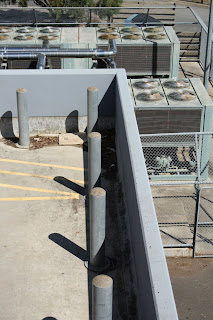
On Friday night my art teacher from high school was apart of an exhibition at the Brunswick St Gallery. The exhibition featured several female artists, revealing an array of styles and approaches. My house mate and I were asked to create a short film that documented the set up and opening night. I also took this opportunity to take a few snaps. I approached photographing this event in the same vein as my previous market photos, focusing on human interaction.I encountered a few technical challenges, due to the nature of the lighting in galleries and the set up of the gallery with a diagonal dividing false wall. The combination of both of these things created scattered and bright lighting that made it difficult to generate a completely sharp focused image. However I did manage to produce a few images that I particularly like due to the artists artwork interaction which features.















































